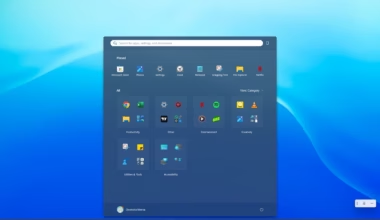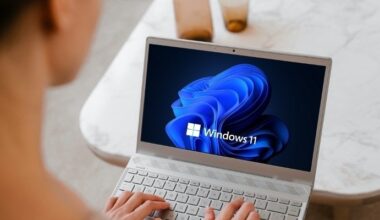Modern lightweight laptops have the disadvantage of heating very quickly. It’s mainly because the laptop manufacturer designs them in a way to make the body thin as much as possible. It allows some space to fit one or two tiny fans. That’s why most thin laptop uses the Intel Thermal (TFDP) software to dramatically underclock the processor to reduce head quickly. Here we talk about how you can make sure that your laptop doesn’t get overheat and what is the method to make your laptop cool quickly.
Alder Lake Intel processors can perform well under 100-degree Celsius temperature however at the highest tolerable temperature you’ll see dropped frame rate when gaming. Also, if you run your CPU at the maximum speed this will quickly increase the CPU temperature and in some cases, it melts the body, We are not saying all this to frighten you but if your laptop body is poor it certainly can melt at worst-case scenario.
The best way is to maintain a cool environment, such as using your laptop in an air-conditioned room or near windows but it is always not possible especially if you live in a hot weather location like India.
We tested all these methods and tips on HP Envy 13-AD128TU ultrabook and MI Notebook Ultra (2021).
Things under hinge
This is the one of the easiest thing To do all you have to put something under your laptop, for instance, you can place some pens under your Ultrabook so that it will allow more air to pass under your laptop. This is the without-spending-a-dim method to avoid high temperature. You can use anything as long as it doesn’t cover the exhaust area (normally in ultrabook the exhaust is placed in the bottom of the side).

Cooling Pad
Normally a cooling pad is not recommended because they are so uncomfortable when using an ultrabook because people who have an ultrabook loves minimalist. There is a wide range of cooling pads, some have a fan or two while there are cooling pads up to 6 fans, but for a 13-inch laptop, a cooling pad with 4 fans is quite more than enough.
Use battery saver mode
Use the battery saver mode to reduce power consumption. You already know that when you’re running low on battery suppose 10% then you should turn on the battery saver mode to make most of the remaining battery. But you can keep the battery saver mode enable even you to have so much battery left, the logic behind that it saves powers by going into a conservative mode so that the apps that are on your screen use the most of your processor and the background apps will be restricted or limited.
Triple your Laptop Battery Life for Free (Methods that really Works)

Enable Passive cooling
In case you’re using the “Power saving” or “balanced” power plan then probably the passive cooling is disabled when running on battery power. Passive cooling means your laptops will reduce performance using the internal fan when a certain temp is triggered. What you can do is enable the passive cooling, to do so navigate to the Power options.
Control Panel\Hardware and Sound\Power Options
And then click on change plan settings and then click on change advanced plan settings.

How to Change Laptop Fan Speed (decrease or Increase)
Used browser with few Tabs opened
This chrome is known as a RAM sucker browser, this is not only limited to Chrome but other modern browsers take high memory to work in a way they are designed. The latest version of popular browsers contains a lot of built-in tools, so it requires more CPU process and more RAM to function properly and to reduce lags.
I’m a 25 tabs lover, so around 81% of battery juice is taken by Google Chrome in less than 6 hours.
The Best Lightweight Browser for Windows 10

Do not run apps that require high CPU speed for a long time.
If you binge-watch Netflix (web) and locally stored videos you’re probably making the laptop use Intel boost technology, on HP Envy-13 laptop the boost increases the CPU speed for a time of 28 seconds, resulting the laptop heats more quickly than normal. Moreover, when rendering a 10-minute video, the laptop gets pretty hot. So the advice is to avoid using such applications for a long time, and when you do apply one (or all) tips given in this article.

Update your computer and issues DPTF Software
Use the latest operating system on your computer, update to the latest MAC OS if you’re an Apple user otherwise update to the Windows 10 (fall creators update). Also, when you reinstall Windows, make sure to install all the available drivers instead of installing graphics and trackpad drivers. Intel’s DPTF is a software solution for thin laptops to prevent all kinds of harm due to overheating. In case you
Limit CPU speed
This method is consists of many about given tips, in order to Limit CPU speed on your laptop you can enable the battery saver mode, disable passive cooling and enable active cooling when your laptop runs on battery power.
Conservative Graphics or undervolting

Decrease an ultrabook laptop temperature and prevent heating
The performance of ultrabooks has been increased with the 8th generation i7 processors despite the thin body. But that does one thing for sure, rise in temperature which is not a good sign for the laptop processor life. Using one (or all) mentioned tips you are certainly going to decrease your laptop temperature by few degrees.
How to decrease temperature of an Ultrabook laptop & prevent heating




